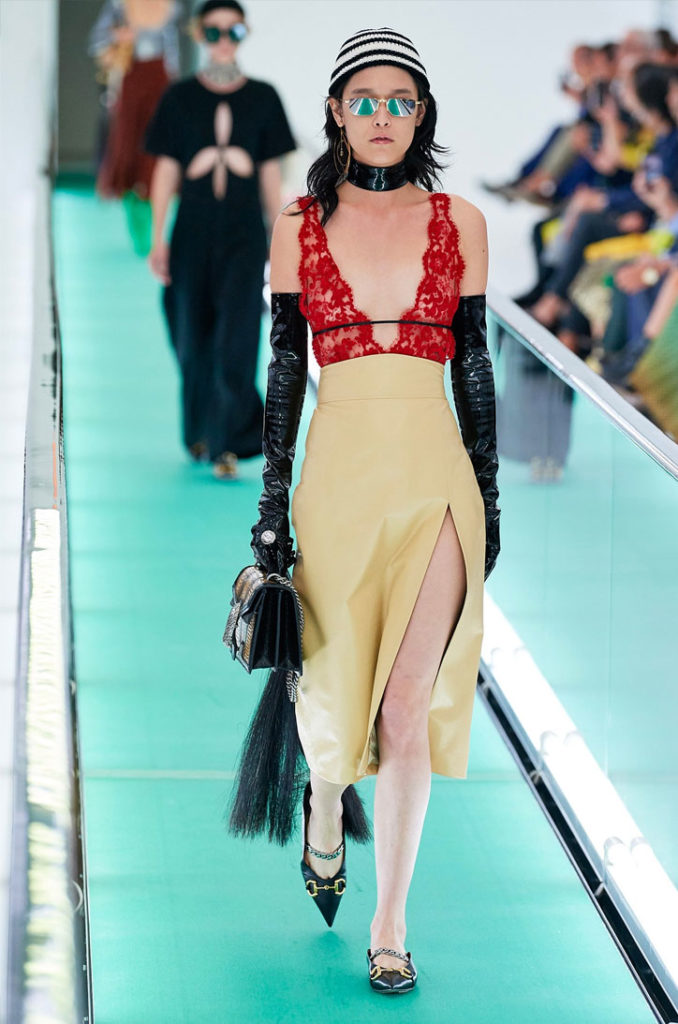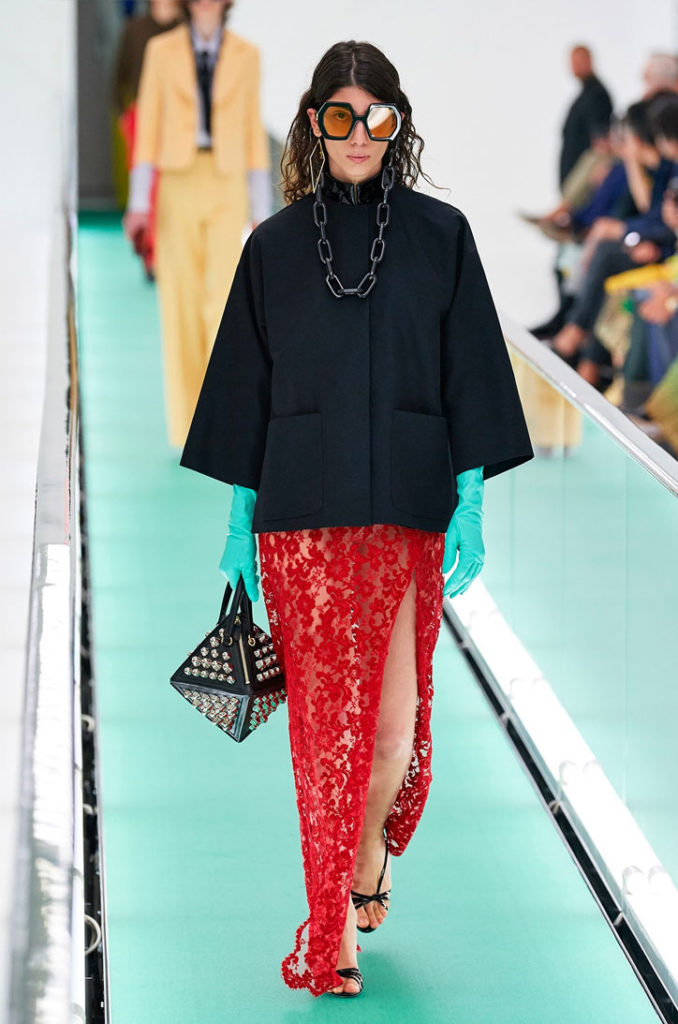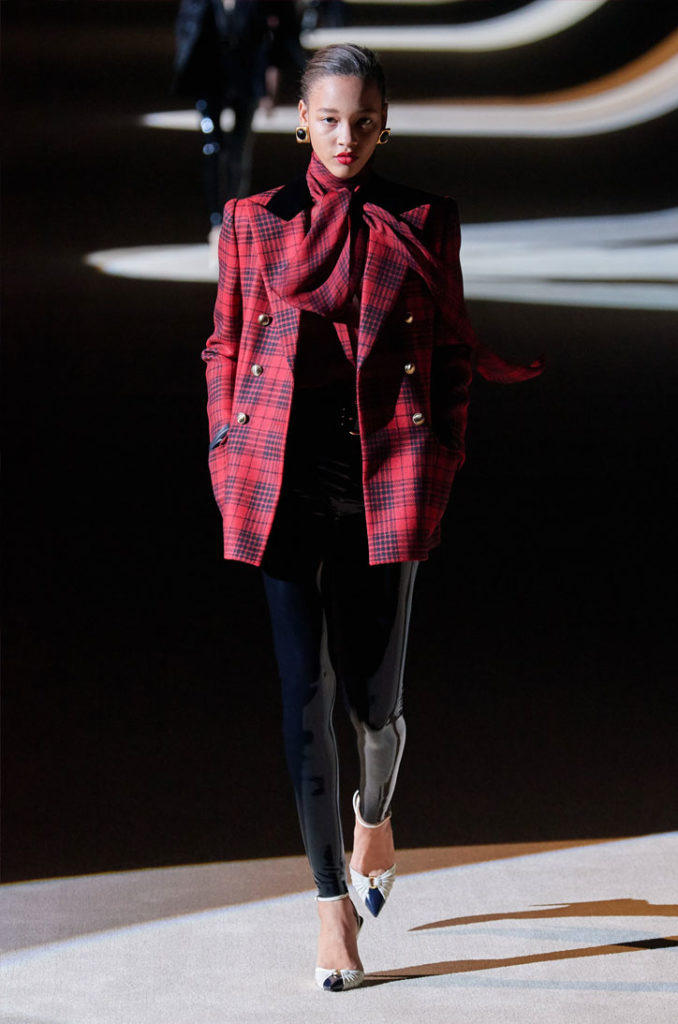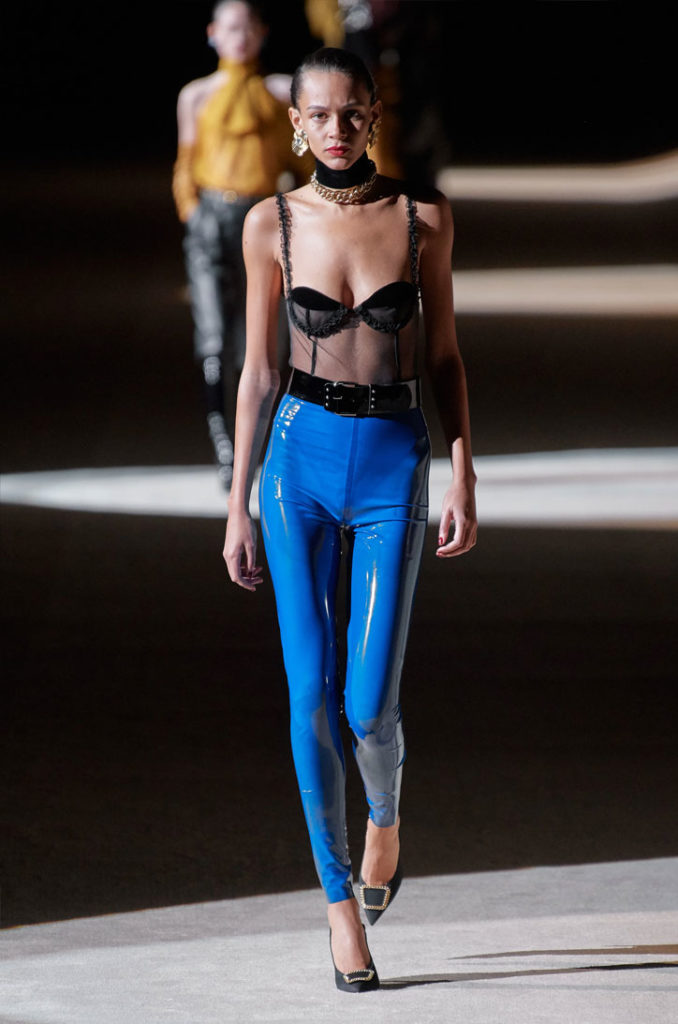Driven by severe fatigue and the relentless global pandemic, fashion is compelled to slow down and challenge its old ways, reducing the spectacle for a more mindful and intelligent approach.
Related: Gucci Gets Candid In Quarantine With Its Campaign Shot From Home
Far from being a groundbreaking observation, it is something that has to be repeated nonetheless: fashion is in no way glamorous. Sure, it looks excessive, considering the trying realities we are faced with today, but once you even so much as peek through the curtains of highly-guarded exclusivity, you will immediately be thrown off by how something so fun and fancy free has been running itself to the ground over the last few years. Even just keeping up is exhausting, what with a calendar that operates on a daze of energy drinks, caffeine, and feverish adrenaline. “There is too much fashion, too much clothes, too much of everything,” exasperates Miuccia Prada at the end of her Spring/Summer 2020 show in September of the previous year, a lifetime before the tidal wave of terror that is the global pandemic washed over the world. “We need to do less.”
It may sound comical, especially since one of the many paradigms that fashion operates on is more is more. But as frivolous as one may choose to lens the industry as, there has been a growing movement from within its hallowed ranks to simplify what has become a circus of fleeting fantasy. “The industry needed to face the challenge of operating on a structure that had been set in the middle of the 20th century and had become completely obsolete,” says Thomai Serdari, marketing and branding professor at New York University’s Stern School of Business, explaining how the onset of the Covid-19 has forced fashion to rethink its system instead of just mindlessly subscribing to its rigorous demands. After all, it hasn’t become increasingly less about just the clothes but the whole spectacle of it all, which includes transition collections wedged in between its main seasonal bookends, larger-than-life productions for fashion shows across multiple capitals, and of course, there’s the environmental burden it has implicated with its hyper-regulated production schedule. Needless to say, fashion has reduced itself to a mill of self-prescribed products and hot ticket items, becoming more of shell of what it once was: An extension of human expression.
What was once an avenue for flourishing creativity, an exchange of ideas and truths realized in the tapestry of the times, as well as of precision and attention to detail has been drained of all its joy just to meet the impossible demands of fast fashion. This impact has cut itself so deep in the fabric of the industry that it has pushed its most celebrated orchestrators to varying degrees of burn out and for some, the brink of madness. Notice how in the recent years, the tango of tenure in the storied houses of fashion have danced at a dizzying pace that anyone could barely keep up. In a letter addressed to Women’s Wear Daily, designer Giorgio Armani expressed for a restoration of authenticity to the craft they hold to a high regard and reverence. “Enough with fashion as pure communication, enough with cruise shows around the world to present mild ideas and entertain with grandiose shows that today seem a bit inappropriate, and even a tad vulgar—enormous but ultimately meaningless wastes of money. Special events should happen for special occasions, not as a routine,” he pens. “The current emergency, on the other hand, shows that a careful and intelligent slow down is the only way out, a road that will finally bring value back to our work and that will make final customers perceive its true importance and value.” Ultimately deciding to hit the brakes and slow down the frenzied pace they unknowingly subscribed to, the brand is taking this moment to realign, defining a more meaningful landscape that will entail giving their collections more time to settle and space to breathe.
Look, fashion is fun, or well, it is at least supposed to be, but it has become admittedly so overwhelming on a visceral sense that the profound effect it used to have has become nothing more than a numbing sensation each time the new, the now, and the next are trumpeted. With little to no time to recover in between scheduled syncopations, the industry has deteriorated to an absurd and criminal level of machination. “We have known for years that something has to change. The time is now. There is no good reason to follow a calendar developed years ago when everything was completely different,” declares Anthony Vaccarello, creative director for Saint Laurent, instigating a shift in the system at a time when the rest of the world is backed into their own corners, recalibrating their points-of-view to adapt to an undefined future way of life. With no one spared from the irreversible effects and reprehensible damages brought about by the violent whiplash of the global pandemic, it has sliced open an opportunity to redefine the way the world works. Now, it is truly time for fashion to slow down, postulating a change that is more insular and intimate.
View this post on Instagram
“In this silence, that is a living thing, my listening embraces all the extraordinary people that I’m connected with. Recalibrating time, to set the pace at a human level, wants to be a promise of revived care towards this amazing community of purpose I proudly belong to. It’s my project, pro-jectum: the art of extending the existence in the future,” writes Alessandro Michele, artistic director of Gucci in a series of diary entries published on its Instagram page. “These days of confinement, in a suspended time that we can hardly imagine as free, I try to ask myself what is the meaning of my actions. It’s a vital and urgent questioning for me, which demands a careful pause and a delicate listening. It’s trying to name, with the precision of love, my fears and my desires.”
With the demon-like pace of fashion coming to a full stop, taking quite the hit as collateral damage in the relentless outbreak that has affected and involved all, there has been a lot of reassessing, coming up with solutions to the crisis of existence. While some brands and designers have since shifted production to much more needed protective affectations, others have taken greater strides in fashioning a more sustainable future where everyone gets to find the source of happiness again. For stalwarts such as Armani and Marc Jacobs, their previously planned shows will be pushed back for at least one regular season, but for the likes of Saint Laurent and Gucci, their actions are a lot more telling of what lies ahead of fashion with the former skipping the entire fashion festivities for the entire year, and for the latter, totally going seasonless, showing only twice a year to a schedule of its own making.
View this post on Instagram
“Now more than ever, the brand will lead its own rhythm, legitimating the value of time and connecting with people globally by getting closer to them in their own space and lives,” an official statement from the Saint Laurent reads. “Saint Laurent will take ownership of its calendar and launch its collections following a plan conceived with an up-to-date perspective, driven by creativity.” Meanwhile, Gucci’s Alessandro Michele expounds further to the sentiment, adding with a signature flourish, “I will abandon the worn-out ritual of seasonalities and shows to regain a new cadence, closer to my expressive call. We will meet just twice a year, to share the chapters of a new story. Irregular, joyful and absolutely free chapters, which will be written bleeding rules and genres, feeding on new spaces, linguistic codes and communication platforms.”
Forced to make conscious and radical changes to archaic dictates that have long held back the industry, fashion is taking the reins, setting the pace for how it continues on its journey in the face of the current circumstances, which is scientifically showing no signs of slowing down, with threats of more threatening waves looming. “Now that the devastation caught us unprepared, we have to think about what we would not want to be the same as it was. Because the greatest risk, for our tomorrow, is abdicating our responsibility for a true and necessary discontinuity. Our history is littered with crises that taught us nothing,” continues Alessandro Michele, contemplating on the impact that ripples through the greater narrative. “This present, then, entrusts us with important responsibilities. Everyone can take on responsibilities, according to ones role and actions, to play a part in a constellation of molecular and widespread changes. As for me, in my own way, I feel the urgent need to change a lot of things in the way I work. I have always been professionally inclined to change, after all, bringing with me a natural and joyful creative restlessness. But this crisis has somehow amplified such transformative urgency, which can’t be deferred anymore.”
This active form of resistance to the perils of fashion’s age-old ways have been working up at snail pace up until now, with the major players inciting reverberating changes. It is moments like these that not only shift the course of this specific history, but also creates an entirely new destination. With fashion weeks folding up temporarily or foraying into a digital tenure, sustainability consciousness becoming more ingrained, and an overall slow down that will encourage the industry and its players to explore every facet unseen more, carve out possibilities beyond the shackles of deadlines that never let up, and to finally tell the stories they want to in their full creative capacity. “I am fully realizing though, that this possibility to tell cannot be constrained by the tyranny of speed. Now we know that too furious was our doing, too insidious was our ride. In this renewed awareness, I feel the need of a different time, released from other-imposed deadlines that risk to humiliate creativity,” says Michele. “That’s why I decided to build a new path, away from deadlines that the industry consolidated and, above all, away from an excessive performativity that today really has no raison d’être. It’s a foundational act, audacious but necessary, that aims at building a new creative universe. A universe that essentialises itself in the subtraction of events and that oxygenates through multiplication of sense.”
It was high time for fashion to slow down, because let’s face it, it was speeding out of control. As wild of a ride as it has become, it has left us jaded and joyless, craving a momentary sense of thrill that renders itself obsolete at every turn. But this overcomplicated, overextended, and overproduced normal has run its course, and while its inevitable end has left us with indelible skid marks and worn out rubber tires that burned to a crisp, there now exists an unprecedented opportunity to make things right, because what’s the rush? Mindful of this renewed purpose, who knows, we might actually get to enjoy the ride this time around.











